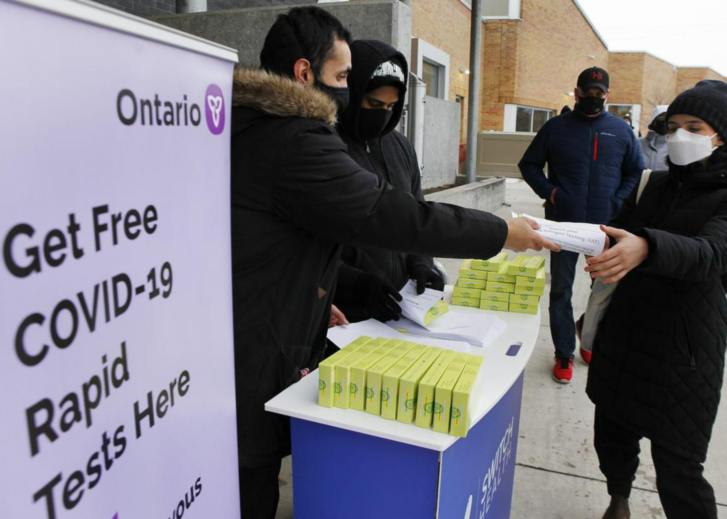While some experts say swabbing both throat and nose can produce more accurate at-home COVID-19 test results, official health guidance still advises you stick to the nose-only package instructions.
With gold-standard testing for COVID-19 becoming increasingly difficult to find, debate is swirling over whether a throat swab sample should be collected alongside a nose swab for at-home rapid tests — contrary to some package instructions.
For most tests, accuracy of a combined throat and nose swab has not yet been tested, and Canadian and U.S. official health guidance still advises people to follow the user instructions of the kit they have on hand.
However, debate has emerged on social media and among some experts after anecdotal evidence from people who said they only tested positive after swabbing both the back of their throat and their nasal cavity, despite test instructions to swab the nose only.
“I finally took Twitter advice and swabbed my throat as well as my nose,” wrote Jennifer Rohn, a British cell biologist in a tweet on Dec. 27. “If you think you might have COVID, consider adding the throat sample.”

The advice was echoed by Dr. Michael Mina, a notable epidemiologist in the U.S., who wrote that Omicron infection could first be detected in the throat due to its shorter incubation period compared to other variants, and a throat and nasal swab may improve chances of picking up on an infection.
Others have pointed to a pre-print study out of South Africa, which found nasal polymerase chain reaction (PCR) missed 14 per cent of Omicron cases, compared to saliva swabs that successfully detected all cases.
Official guidance from Health Canada and Public Health Ontario, as well as a recent statement from the United States Food and Drug Administration (FDA), maintains a nasal cavity swab is the best standard to follow when it comes to testing for COVID-19 at home if the package instructs it.
“The FDA has noted safety concerns regarding self-collection of throat swabs, as they are more complicated than nasal swabs — and if used incorrectly, can cause harm to the patient,” a statement provided to the media by the FDA said. “The [U.S. Centers for Disease Control] recommends that throat swabs be collected by a trained health-care provider.”
Christine Bruce, senior director of the laboratory medicine program at University Health Network in Toronto, said lab employees continue to follow Health Canada guidance on using a nasal swab only when conducting a rapid antigen test, as there’s no definitive research that suggests a throat swab alongside a nasal swab would yield a more accurate result.
“It would always be our position as lab experts to follow the manufacturer and Health Canada instructions,” Bruce said.
While the throat method of sample collection is not used in the United States or Canada, it is officially approved in the United Kingdom, where certain rapid tests distributed by the National Health Service instruct the collection of both throat and nasal swabs. Others that are distributed, such as the FlowFlex or Orient Gene rapid tests, instruct users to only take a nasal swab.
For tests that swab the throat, U.K. and test guidelines advise users not to eat or drink for at least 30 minutes before taking the test.
Dr. Tara Kiran, a primary care physician at Unity Health Toronto, said it’s important to note that experts and doctors are still in the process of learning how to best use rapid at-home tests to detect Omicron. But she added her advice is to swab both nose and throat for higher sensitivity of test results.
Kiran also said she agrees with the FDA that there could be a risk of doing a throat swab incorrectly without package directions, but there are easy-to-follow resources and videos available on how to perform a combined throat and nose swab at home safely.
Though not as accurate as the gold-standard polymerase chain reaction (PCR) test due to a higher margin of error, rapid at-home tests have become most people’s best bet to determine whether or not they are sick, as Ontario’s PCR testing capacity has been limited due to a surge in cases linked to the Omicron variant.
But if someone is developing symptoms, Kiran advises they should isolate regardless of a negative or positive result, as rapid tests are not entirely accurate.
“A rapid antigen test does not guarantee you’re unable to transmit the virus right now or that you don’t have it, because it could be early on and the [infection] is not showing at this time,” Kiran said.
Article From: The Star
Author: Nadine Yousif

